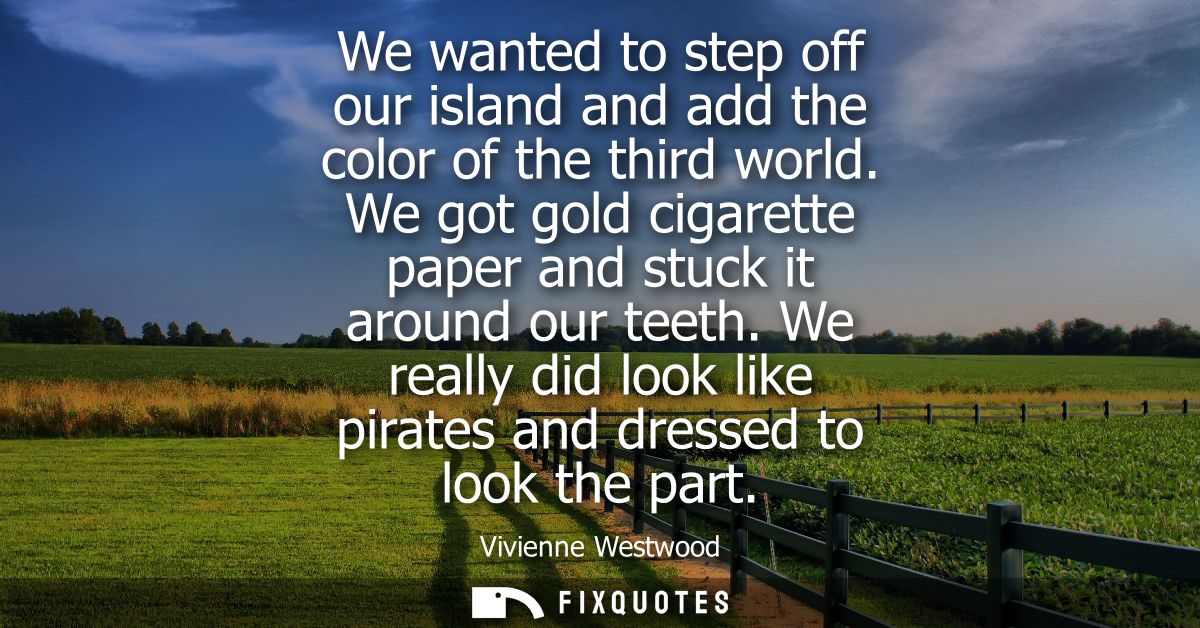"We wanted to step off our island and add the color of the third world. We got gold cigarette paper and stuck it around our teeth. We really did look like pirates and dressed to look the part"
About this Quote
Vivienne Westwood evokes a powerful image of creative rebellion and cultural synthesis in her words. The desire to "step off our island" suggests a longing to break away from the constraints and insularity of British culture, particularly the monoculture often associated with the UK in the postwar period. Westwood and her contemporaries sought inspiration beyond their immediate environment, reaching toward the vibrancy and perceived authenticity of the so-called "third world”, a term that, in the context of her era, was often used to refer to cultures outside the Western mainstream. Their goal was to infuse their art, music, and fashion with the richness and diversity they felt was lacking at home, adding not just literal color, but energy, texture, and story.
The act of covering their teeth with gold cigarette paper is symbolic and performative: a form of playful mimicry, borrowing aesthetics with an intentional nod to both piracy and to the gold teeth often associated, sometimes stereotypically, with certain global cultures. This appropriation was not about accuracy but about crafting a new identity, inserting themselves into a fantasy role with a rebellious edge. The pirate image encapsulates defiance, lawlessness, and a refusal to conform; it also references the outsider status of punks, who saw themselves as plundering the established culture, repurposing and transforming its meaning. Dressing to "look the part" was an intentional act: clothing as costume, disguise, or armor, signaling a group identity that stood in opposition to the mainstream.
Westwood’s reflection highlights the importance of outward appearance as an expression of inward attitude and aspiration. The blending of icons, pirates, global influences, luxury items like gold, speaks to punk’s ethos of creative assemblage, where boundaries are blurred, and subversion becomes a central aesthetic principle. Through these acts, Westwood and her cohort engineered a cultural revolution, using style as both shield and weapon.
More details
About the Author

